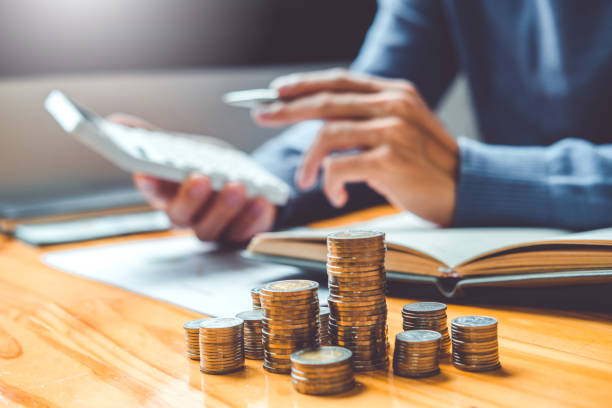
Money changed the entire concept of the barter system. For centuries, money has served as a medium of exchange for goods and services, helping countries exchange goods and services and developing friendly relationships.
The total money in the world economy, measured as the global M2 money supply, encompasses cash, checking accounts, and easily accessible savings. As of 2023, this figure was estimated at $95.7 trillion, with the U.S. and China contributing significantly, according to the CIA World Factbook.
Every great nation, in most cases, has a central bank that regulates and publishes money supply data in collaboration with the government.
In the modern world, money comes in two varieties: physical (coins and notes) and virtual (electronic bank accounts, cryptocurrencies). You can use these funds to invest in one of the best business investment opportunities.
Why should you know how much money there is in the world right now?
Money’s existence enables you to exchange your labor for things you value. There are numerous major reasons why you should know how much money is in the world right now, including the following:
Money brings you freedom
When you have sufficient money, you can live wherever you want, meet your needs, and pursue your interests. If you can become financially independent and have enough money to live on without working, you will have even more freedom because you will be able to do whatever you want with your time.
Money empowers you to pursue your dreams
Having money allows you to start a business, build your dream home, pay for the costs of having a family, or achieve other goals you believe will help you live a better life.
Money provides security
When you have sufficient money in the bank, you won’t have to worry about having a roof over your head, having enough to eat, or being able to see a doctor when you’re sick. This does not imply that you will be able to afford everything you desire, but it does imply that you will be able to live a stable middle-class life.
What is the total amount of money in circulation in the world?
There is nearly $2.1 trillion in circulation, including Federal Reserve notes, coins, and currency no longer issued. If you search for all physical money (notes and coins) and money deposited in savings and checking accounts, you might find around $40 trillion.
This figure only represents ‘narrow money.’ When ‘broad money” is included, the total rises to more than $90.4 trillion. When bitcoins and other cryptocurrencies are factored in, the total grows even higher.
The total amount of money in investments, derivatives, and cryptocurrencies exceeds $1.3 quadrillion. This is how it appears written out: $1,300,000,000,000,000.
The combined value of all cryptocurrencies in circulation (over $2 trillion) and commercial real estate investment ($30 trillion) also represents a small portion of the total money in the world. Bitcoin, for example, accounts for less than 1% of global currency.
How much money in USD is there in the world?
According to the United States Census Bureau, there will be 332,290,964 people in the United States. If you divide the cash evenly, each person should have about $17,454 in cash on them (or stuffed under the mattress).
Obviously, some money is missing, but there’s an easy explanation: the Federal Reserve estimates that between half and two-thirds of the M0 money stock of US dollars is held overseas at any given time.
The remaining funds are in various types of bank accounts, and the Federal Reserve has tracked these funds in three different values known as the M1, M2, and M3 money supplies.
M1 money value
M1 denotes all currency held outside of the United States Treasury, Federal Reserve banks, and depository institution vaults. Demand deposits at commercial banks (excluding amounts held by depository institutions, the United States government, foreign banks, and official institutions), the Federal Reserve float, and other liquid deposits are also included. In March 2021, the M1 money supply in US dollars was approximately $18.7 trillion.
M2 money value
M2 is the supply of M1 plus small-denomination time reserves (under $100,000). The M2 money supply was approximately $19.9 trillion.
M3 money value
M3 consists of M2 plus larger CDs. The Fed stopped tracking the M3 money stock as an economic indicator in March 2006 because it did not add any information on economic activity that M2 did not already provide [sources: Federal Reserve].
Using the M2 money supply definition, anyone looking for all of the US dollars in the world could expect to find approximately $19.9 trillion. If you only want to count the value of notes and coins, there are approximately $2.1 trillion in notes and coins floating around the world.
How much money is there in the world in pounds?
The pound sterling is the longest-surviving currency in existence, with origins in continental Europe.
This currency gets its name from the Latin word “libra,” which means “weight and balance.” For more than 300 years, the Bank of England has been the authority issuing pound banknotes, and these notes have undergone numerous changes during that time.
The United Kingdom has the world’s sixth-largest economy, with a GDP of £2.83 trillion (£2.1 trillion).
How much money is there in the world?
There is presently around $36.8 trillion in circulation in its most basic form, known as ‘narrow money.’ This includes notes, coins, and the value of ‘easily accessible’ funds such as current accounts.
When ‘broad money,’ which includes savings, ISAs, and fixed-term accounts, is added, the figure rises to a staggering $90.4 trillion.
Money has a global value of around $215 trillion, while property has a value of $217 trillion.
The figure becomes even more baffling when you factor in the derivatives market, which includes stocks, bonds, commodities, currencies, and index rates. Financial experts estimate that this is worth $630 trillion at the low end.
If everyone in the world received an equal share of that staggering sum, everyone would receive approximately $154,000 (equivalent to approximately £114,000).
Who decides which currency each country in the world uses?
Each government decides on its own currency. Treaties and other alliances formed by countries can sometimes dictate the choice of currency. For instance, 19 of the European Union’s 28 members have agreed to use the euro as their currency.
Who determines the amount of money in the world?
The central bank of each country is the primary controller of the money supply.
Central banks, such as the Bank of England, can alter the proportion of deposits that commercial banks must hold on reserve.
They may also inject cash into the market and change the interest rate at which they lend money to commercial banks.
Higher interest rates deter people from borrowing, and as a result, they spend less. The amount of currency in circulation in some countries varies according to public demand.
For instance, at Christmas, the public requires more money as they withdraw cash from their bank accounts. Physical money now accounts for less than 10% of all money.
Kind of money in circulation
While most types of money can be exchanged for one another, it is critical to understand the distinctions between the four major types of money.
Commodity Money
Commodity money is money that is based on the purchase of a commodity. Commodities are items that are both useful and valuable. Gold and silver are the most commonly used commodities as money. Livestock, shells, and cigarettes are other examples of commodities that have been used as money.
Fiat Money
Fiat money is money that is not backed by a commodity. It can be used as legal tender because of a government decree. Fiat money has no intrinsic value and is not backed by anything.
Cryptocurrency
Cryptocurrency is a type of virtual currency that is secured with cryptography. Because of this security feature, a cryptocurrency is difficult to forge. The organic nature of a cryptocurrency is a distinguishing feature and arguably its most endearing allure; it is not issued by any central authority, making it theoretically immune to government interference or manipulation.
Fiduciary Money
Fiduciary money is money that is built on trust. It is unsupported and has no intrinsic value. It is declared legal tender by the government or another authority. Fiduciary money is also referred to as credit money.
How is money supply measured in the world?
The various types of money in the money supply are generally classified as Ms, such as M0, M1, M2, and M3, based on the type and size of the account in which the instrument is kept. Not all classifications are widely used, and classifications may differ between countries. The money supply reflects the different types of liquidity that are available in the economy for each type of money.
Conclusion
Globally, there is approximately $40 trillion in physical money. If cryptocurrencies, broad money (M2 and M3), investments, and derivatives are included, the total could reach a quadrillion. However, as the world becomes more digitalized, physical money may become obsolete in the future.
FAQs
How much money is there in the world per person?
Around $17,328 is spent per person worldwide.
How much money was in the world 2021?
Globally, there is approximately $40 trillion in physical money. If cryptocurrencies, broad money (M2 and M3), investments, and derivatives are included, the total could reach a quadrillion.
How much money is the world in debt?
Global debt is from governments, businesses, and individuals, and it is dangerously high. According to the Institute of International Finance, a global financial industry association, global debt will reach a record $303 trillion in 2021.
Reference
- www.gobankingrates.com
- www.visualcapitalist.com
- www. money.howstuffworks.com
- www.businessinsider.com

Leave a Reply